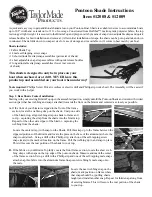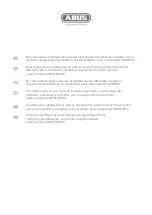
User’s Manual for Xplore
Version 2.53 - Version date: 15.02.2022
Page
16
of
46
Chest support
- Adjust the chest support height in
according to the user’s need for
support on the upper body. The higher up the chest support is the more support. Lower
chest support gives less support and more freedom of movement. It is important that
the user is not given more freedom of movement than he/she can handle safely.
The chest support should
ALWAYS
be in use. It is a safety feature preventing the user
from falling out of the device.
Chest support width
- The chest support bar can be adjusted wider in
order to provide greater freedom of movement.
Chest belt
- can be loosened or tightened in length both in the front and at the
back. This to adjust the persons position forward or backward in the device.
Chest and hip support interplay
- By adjusting the lengths of the chest and hip belts,
the user’s alignment in the device can be
adjusted.
Accessories
–
can be used when more corrected positioning of the user in the device is needed.
Headrest
- Adjust height-wise in order to accommodate the desired level of the headrest.
Please refer to Chapter 12.1 Headrest for details.
Correction system thigh and ankel
- see Chapter 12.4 for details on how to
configure this.
Optimal positioning in the Xplore
Seen from the front
- The user is perpendicular to the ground, as far as is practically
feasible.
Seen from the side
- The user is perpendicular to the ground, or tilted slightly forwards
(1-3 degrees).
Testing -
The user is now positioned in the Xplore. The strength of the shock absorber
can be adjusted to enable mobility forward. Amount of weight bearing on the feet will
depend on how much the user is supported by the seat and height of the column.
important:
The
Xplore shall only be adjusted by a Made for Movement representative or
another qualified person who has been trained by Made for Movement.
















































